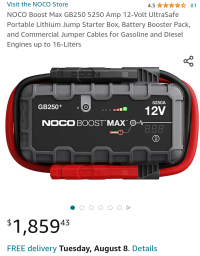I wonder.... if some of the perceived need for an emergency battery is driven by some owners (not necessarily of Ericson's) who are dismayed by the inherited DC systems that they find on a 40 or 50 year old vessel. And often... the original "rat's nest" further modified by a chain of prior owners, some of whom paid zero attention to correct or safe practices. i.e. Idiots.
The thing is -- it's better in the long run to just have a basic DC system that Functions all the time. i.e. a large enough House bank for everything including starting the typical small diesel, and a charged-up "emergency/spare/extra" battery bank for just those very few times when it's needed.
When we were in the 9th year of our prior main bank of the two large GC batteries and it suddenly dropped to 10 volts one night when we were tied to a no-utilities park service dock, I switched over to the fully charged 12 volt bank #2 and we carried on. A few days later I replaced that main #1 bank.
Now after about 6 years we are seeing a reduction in charge capacity on the current house bank and are shopping for two more 6 volt GC batteries.
Redundancy is vital, but having a redundant battery for the secondary/emergency battery bank just seems like overkill. At some point the multiple "redundancy" starts to veer into OC territory. Perhaps.
I shall hop back off of my 12 volt soapbox now.


